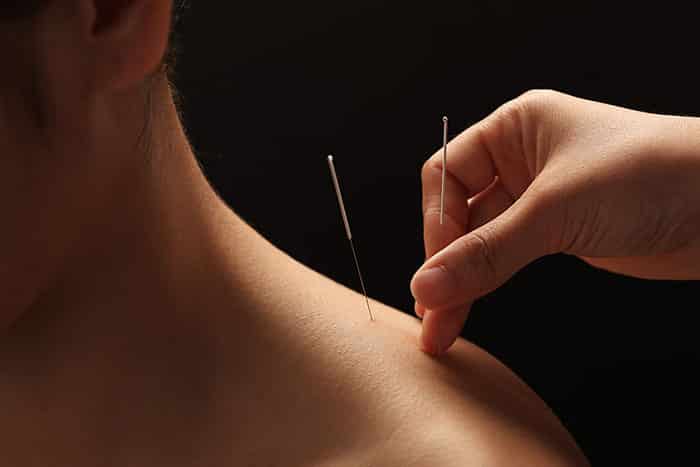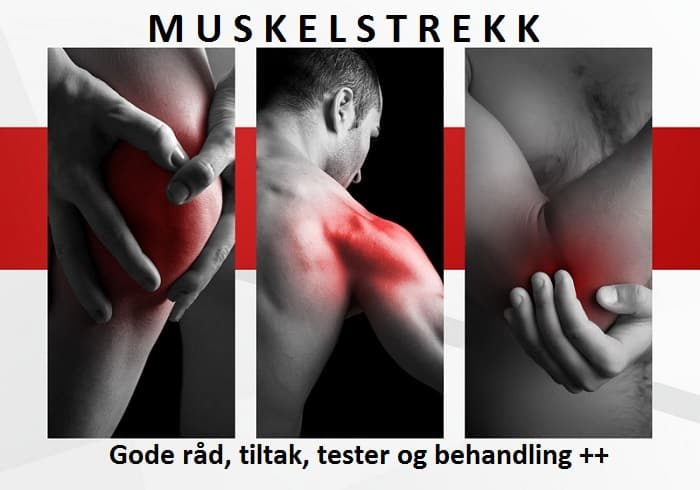Acupuncture Association: Who is allowed to treat with acupuncture / needle treatment?
Last updated 05/08/2018 by The pain clinics - Interdisciplinary Health

Acupuncture Association: Who is allowed to treat with acupuncture / needle treatment?
The word acupuncture comes from the Latin words acus; needle / tip, and puncture; puncture / stab. In other words, all treatment using acupuncture needles is basically acupuncture. As of today, there are no requirements for education in acupuncture on the part of the authorities, and this means that anyone is allowed to stick needles. Many health professions have experienced the positive effects of acupuncture and therefore use acupuncture needles as one of their tools in treatment, especially in pain patients.
This is a guest article submitted by Jeanette Johannesen, chair of the board of the acupuncture association - and reflects her personal opinions and statements. Vondt.net never takes sides with submitters of guest articles, but chooses to behave as a neutral party to the content.
We remind you that you can also submit a guest article. Feel free to follow and like us too via social media.
Also read: - How to Relieve Muscle Tension in the Neck and Shoulder
Documented treatment
It is perhaps no wonder that many people experience the positive effect of acupuncture, for summarized research (comparative literature review) shows that acupuncture has an effect in 48 conditions. Acupuncture is especially well documented for a variety of pain conditions, allergy complaints and nausea.
Now there has also been documentation, published in PAIN, that shows effect on pain relief one year after that the treatment is discontinued, which means that the patients may have confidence that the effect of the treatment will continue.
In Norway, acupuncture is included in clinical guidelines, and is recommended for ailments such as headaches, migraines, nausea, chronic low back pain (read more here ) and polyneuropathy. Clinical guidelines take into account several factors; such as the size of the treatment effect, the side effects of the treatment and the cost-effectiveness.
As there are no specific requirements for what education the acupuncturist has, this can be a risk to patient safety in the form of inadequate and incorrect treatment. Studies show that acupuncture is a safe treatment, especially when it is performed by qualified acupuncturists.
What are "qualified acupuncturists really"?
There is currently a bachelor's degree in acupuncture at Kristiania University College in Oslo, which has existed since 2008. The college is the only educational institution in Scandinavia that offers a bachelor's degree in acupuncture.

A bachelor's degree is a 3-year full-time study, which provides 180 credits in medical subjects and in acupuncture-related subjects. Many therapists today have a short basic course, possibly an in-depth course in acupuncture / acupuncture and compared to a bachelor of acupuncture, this is of course small.
There are several countries in the world that make certain demands on acupuncturists, and today acupuncture is part of the health care system in Switzerland, Portugal, Australia, China, Japan, South Korea, Singapore, Malaysia and several states in the United States. In Norway, acupuncture is used in 40% of Norwegian hospitals.
How can people know what education the therapist has?
- There are several associations and professional groups for therapists who use needles in their treatment, and the various associations or professional groups make certain demands on their members. The Acupuncture Association is the largest and oldest association in Norway (40 years), and places high demands on its members. To become a member, acupuncturists must have 240 credits, ie 4 years of full-time study, in acupuncture related subjects and medical subjects.
The Acupuncture Society has 540 members distributed throughout the country of Norway and about half of these are authorized health professionals (physiotherapists, nurses, doctors etc). The other half are classical acupuncturists with equally solid education in acupuncture-related subjects and medical subjects (basic medicine, anatomy, physiology, disease theory, etc.). In other words, all members of the Acupuncture Association are very qualified to treat patients with acupuncture, and combine methods such as classic acupuncture, medical acupuncture, IMS / dry needles / needles treatment and everything that deals with acupuncture needles treatment. Members are also obliged to follow ethical and hygiene guidelines on an equal footing with authorized health personnel.
Complications in unauthorized healthcare professionals
There has been talk in the media that if the patient is treated by unauthorized health professionals, they have nothing they should have said if an accident should occur as a result of the treatment they receive. This is not right. All members of the Acupuncture Association are obliged to have liability insurance that insures legal liability for financial loss caused by property or personal injury caused during the course of acupuncture treatment. In addition, the Acupuncture Association also has its own patient injury committee consisting of three doctors. Members are required to report any complications to the association, which is handled by the Patient Injury Committee and who then considers whether the treatment is considered to be professionally sound or not.
Since there are currently no requirements to practice needle needles, it is safest to choose an acupuncturist who is a member of an association or professional group. By choosing an acupuncturist who is a member of the Acupuncture Association that sets the highest requirements for the acupuncturist, you as a patient will be sure that the person you are getting the needle treatment from has solid education and expertise in the profession, and you as a patient will be well looked after.
Guest article by Jeanette Johanessen - chair of the board of the Acupuncture Association.
Next page: - This You Should Know About Muscle Pain, Miosis and Muscle Tension
Click on the image above to proceed to the next page.
 - Feel free to follow Vondt.net at YOUTUBE
- Feel free to follow Vondt.net at YOUTUBE
 - Feel free to follow Vondt.net at FACEBOOK
- Feel free to follow Vondt.net at FACEBOOK
Ask questions via our free inquiry service? (click here to learn more about this)
- Feel free to use the link above if you have questions or the comment field below







Leave a reply
Want to join the discussion?Feel free to Contribute!